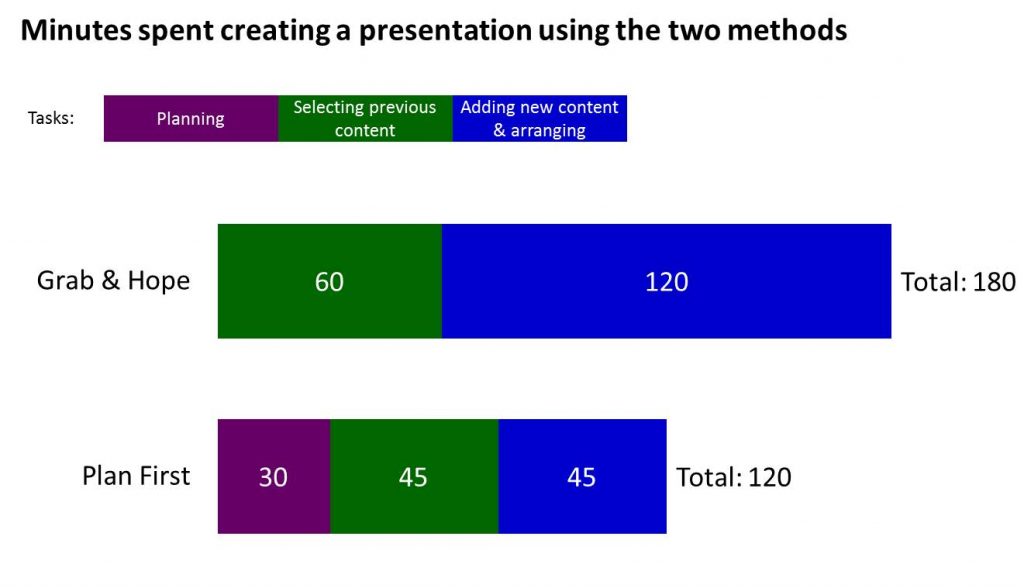When I deliver a customized workshop, I always start the day spending at least 90 minutes talking about how to structure your message. During this time I don’t mention slides at all, even though I am talking about creating effective PowerPoint presentations. Why should all business presenters spend time on the structure first? Because the most common approach, what I call Grab and Hope, doesn’t work.
Every business professional I speak to is very busy these days. Since the economic turmoil of 2008-9, almost every corporate professional is essentially doing two jobs due to downsizing and not adding staff when the business grew. Time is at a premium and people are looking for the fastest way to get things done.
When they have to put together a presentation, they default to what they have always done, and what they have seen their colleagues do. They start by grabbing slides from previous presentations, theirs and ones done by colleagues, and throw them into a file. They then start trying to figure out how this will flow coherently. They add some slides when they think it might help or if a topic is missing. They hope it all comes together before they have to present it. Thus the name Grab and Hope.
To borrow a line from Dr. Phil, “How’s that working for you?” Most professionals just chuckle when I describe this common approach. They know this is what they do. It isn’t working well, but they don’t know what else to do.
The solution is to spend time up front planning the message first. Use the GPS approach from my book GPS for Presentations. Once you know what topics and information you need, then decide if there are slides or other content that will work to present the messages you have planned. Add any slides that you need to, and arrange it according to the plan.
The common pushback I get, and it is perfectly OK if you are thinking this right now, is to say that this sounds like it will take even more time because it is adding a step.
While it appears that adding a step will increase the total time, that is not the case. How can this be? When I talk to participants in my workshops, they agree that they spend a lot of time during the Grab phase trying to decide if a slide is needed or not. Then they spend even more time in the Hope phase trying to figure out how it all fits together and find what may be missing.
By doing the planning up front, you reduce the time spent selecting previous content because you know exactly what you need and can decide if a previous slide will work or you need to create a new slide. The Grab phase goes much faster when you know what you need to grab. The Hope phase is replaced by focused planning up front and focused creation of new slides and arranging. Together this takes far less time than the struggle of trying to fit different slides into a coherent message.
Participants tell me that this approach cuts the time they spend preparing presentations dramatically. Here’s an example of how this can work.
There is no guarantee of how much time you will save, but people tell me that this approach cuts the time it takes them to prepare presentations, leaving more time for their other tasks. Next time you have to create a presentation, don’t use the Grab and Hope method, try the GPS approach. This video shows you a summary of the GPS approach.

Dave Paradi has over twenty-two years of experience delivering customized training workshops to help business professionals improve their presentations. He has written ten books and over 600 articles on the topic of effective presentations and his ideas have appeared in publications around the world. His focus is on helping corporate professionals visually communicate the messages in their data so they don’t overwhelm and confuse executives. Dave is one of fewer than ten people in North America recognized by Microsoft with the Most Valuable Professional Award for his contributions to the Excel, PowerPoint, and Teams communities. His articles and videos on virtual presenting have been viewed over 4.8 million times and liked over 17,000 times on YouTube.

